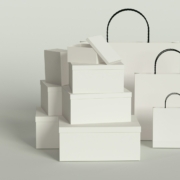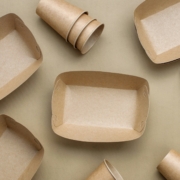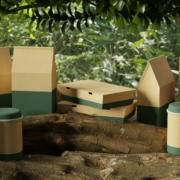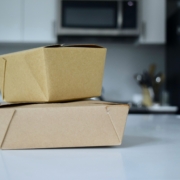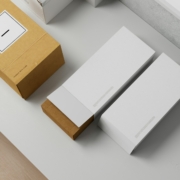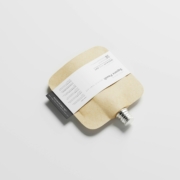What do I need to include in my first custom packaging quote?
Taking the first step into custom packaging can be both exciting and nerve-wracking. Whether you’re a small business hoping to lift your brand or an established firm looking for a fresh look, the packaging you choose says a lot about your business. It’s more than just a container. It communicates quality, creativity and care. But before you leap, it’s important to be ready with the right questions and a clear idea of what to expect when asking for that first packaging quote.
Knowing what goes into a custom packaging quote helps you avoid confusion and extra costs. With so many options out there, it can feel overwhelming. But you’re not alone. Many business owners go through the same process. By asking the right questions and knowing what details to provide, you’ll be in a better shape to get a quote that fits your goals and budget.
What Details Do I Need to Provide for an Accurate Quote?
When you’re requesting a custom packaging quote, the more specific you are, the better. Being clear and thorough about your product and preferences helps suppliers deliver a quote that makes sense for your needs. Here are the key things you should prepare before you reach out.
– Product dimensions and specifications
Start by sharing the exact size and shape of your product. Is it bulky or compact? Fragile or hardy? A fragile item might need cushioning. A solid product may not need too much material. These details help decide what kind of packaging suits your product best.
– Material preferences and requirements
Does your business favour recyclable or biodegradable materials? Is keeping costs low more important, or is the packaging’s visual appeal your top concern? Choosing between something like soft-touch cardboard or rugged plastic will affect both look and budget.
– Order quantity and potential repeat orders
Let suppliers know how many units you plan to order, and whether you expect to place repeat orders in the future. Higher volumes can often reduce the cost per unit, so it’s a good idea to be upfront about your longer-term needs.
Taking time to think through these details creates a strong foundation for your quote. This helps prevent misunderstandings and extra extras popping up later. It also ensures that you’re only getting quoted for what you truly require.
How Do I Compare Different Packaging Options?
Not all packaging is created equal. Understanding what you’re being quoted for helps you make more informed choices and avoid choices that don’t suit your product or your customers.
– Understanding material types and their benefits
Get to know your material options. Cardboard is popular for its sustainability and cost-effectiveness. Plastic might fit when strength and waterproofing are needed. Some newer materials offer compostability or textured finishes. Ask about pros and cons when comparing these.
– Considering environmental impact and sustainability
Many suppliers now offer eco-friendly options, which can boost your brand image and meet rising shopper demands. For example, greaseproof paper printed with soy inks or mailers made with recycled fibres can show that you care about the planet. If sustainability matters to your buyers, make sure it shows in your packaging.
– Balancing cost with quality and durability
Everyone wants to save money, but going cheap can backfire. Thin materials may mean products arrive damaged or look second-rate. Be clear about what you’re willing to trade off, and what’s non-negotiable.
Overall, your packaging shouldn’t just protect your product. It should also match your business values, your product’s needs and your brand’s tone.
What Design Elements Should I Consider?
Design is often what grabs people first. Before trying your product, customers notice details like layout, colours and packaging texture. That makes it worth thinking through how design supports your business goals.
– Importance of branding and logo placement
Many customers recognise your product by your packaging. Make sure your logo, colours and fonts show up consistently. A printed greaseproof wrap or printed carton can become something people remember and associate with your product’s value.
– Custom design options versus standard templates
Templates are easier and cheaper but may not stand out. Custom designs tailored to your business offer more flexibility and originality. You can build something that supports the story you’re telling with your product.
– Working with a designer or using in-house resources
Some businesses already have a designer they trust, while others may rely on outside help. Both have their place. Just make sure wherever you source your design, it works technically (fits printer specs) and creatively (fits product and audience).
A visually strong and useful packaging design gives your brand a polished look without sacrificing practicality.
What Are the Common Hidden Costs to Watch Out For?
Getting your quote is a moment of clarity, but sometimes the small print introduces surprises. Being aware of common hidden costs helps you avoid unexpected charges.
– Setup fees and printing fees
Some printers charge a once-off fee to set up your design or custom plates. This might seem minor but could be significant if you’re only placing a small order. Clarify if this is included in your quote.
– Shipping and handling charges
Delivery costs vary depending on weight, location and urgency. Always ask whether shipping is included in the quote, and if there are additional handling fees for things like customs or fast-tracked orders.
– Costs of prototypes and adjustments
Getting a sample before you commit to the full run is smart. But samples can come with a fee, and if you tweak the design, there may be new charges. It helps to ask upfront how many rounds of revisions are included and what each new mock-up will cost.
Asking the right questions around these areas will help you prepare your budget properly and remove surprises later on.
FAQs
Q: What are the typical lead times for custom packaging?
A: This depends on the style and complexity of your order. Most providers offer timelines between a few weeks to a couple of months.
Q: Can I get a sample before placing a full order?
A: Yes. Most suppliers offer prototypes or samples to test the design and materials before production begins.
Q: Are there minimum order quantities I need to be aware of?
A: Most suppliers do have minimum order requirements, so ask early to avoid wasting time or overshooting your capacity.
Q: How can I ensure my packaging is eco-friendly?
A: Look for providers that offer certified sustainable materials, low-waste production methods and biodegradable printing inks.
Start Your Packaging Project Off Right
Getting a strong start with custom packaging comes down to being prepared. When you know what suppliers need to quote accurately, and what features will serve your brand best, you avoid stress and wasted spend. Bringing all the right questions into the quote process means you can compare options with more confidence and make smarter choices on material, design and delivery.
It’s natural to feel some pressure when launching new packaging, especially when you’ve had poor experiences in the past. But with a clear plan, you can move your packaging from patchy and inconsistent to clean, cohesive and shelf-ready.
Start small with an idea of your goals, understand the full cost of each part, and work with a team that listens to what makes your brand stand out. The right packaging isn’t just protective. It’s a chance to communicate value, create shelf appeal and make a solid first impression.
Looking for packaging that keeps your food fresh while showing off your brand? Star Stuff Group offers custom printed greaseproof paper that’s ideal for bakeries, cafés, catering events, and food trucks. Whether you’re serving cookies, burgers, or charcuterie boards, make every detail count with professionally branded wraps. Explore our range of custom printed greaseproof paper to get started.

